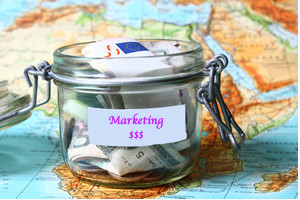I often encounter a mindset that sees marketing as an expense. I suppose from the perspective of an accountant, that is absolutely accurate. However, in reality, marketing should be viewed as an investment. Think of it this way: marketing is only expensive if it’s not working. If you made 5 dollars every time you spent two marketing dollars you would be spending money all day and be happy about it. Ideally, marketing is an investment.
Most of us live within the constraints of a budget. There are many good things to be said about marketing on a shoestring, on choosing strategies that are smart and that work. Today, however, we are going to talk about avoiding turning our shoestrings into nooses – making mistakes with our marketing dollars that, like bad investments, are nothing but expensive errors.
 I once received an email from using an AOL email account. At the bottom of her email was an advertisement: “Make your summer sizzle with fast and easy recipes for the grill.” Really? All in the name of a “free email account” this particular travel professional does not mind looking like a consumer. What is a client to think? Does an AOL account, or Hotmail or Gmail indicate professionalism? I suggest that this is a shoestring noose – in reality, it is more expensive for the agent to use a free AOL email than to spend $15.00 a year for a professional email account. With every email this agent sends, she loses credibility.
I once received an email from using an AOL email account. At the bottom of her email was an advertisement: “Make your summer sizzle with fast and easy recipes for the grill.” Really? All in the name of a “free email account” this particular travel professional does not mind looking like a consumer. What is a client to think? Does an AOL account, or Hotmail or Gmail indicate professionalism? I suggest that this is a shoestring noose – in reality, it is more expensive for the agent to use a free AOL email than to spend $15.00 a year for a professional email account. With every email this agent sends, she loses credibility.
Shoestring marketing is not about doing things cheaply. Let’s not confuse being smart with being cheap.
Other areas where you should not skimp on your marketing expenditures:
- Business Cards – purchase good ones, they are your silent ambassadors;
- Logos – please do not build one out of clipart, use a professional;
- Brochures – Better to not have one than to have a bad one.
- Websites – Yikes. Conflicts of interest should prevent me from editorializing too much here. But they don’t. www.VoyagerWebsites.com
Only those with highly developed artistic sensibilities should undertake the design of their own collateral. I’ve seen it work, but those exceptions prove the rule. Marketing collateral is the number one area where you should make a real investment. These items stand-in for you when you are not there to speak for yourself. The last message travel agents want to give their clients is “do it yourself.”
You get the idea.
It is always important to be smart with your marketing dollars. That is an entirely different matter, however, from being “penny wise and pound foolish.” If you want to engage your clients on a professional level, be cautious about how your present some of your most visible points of contact.



